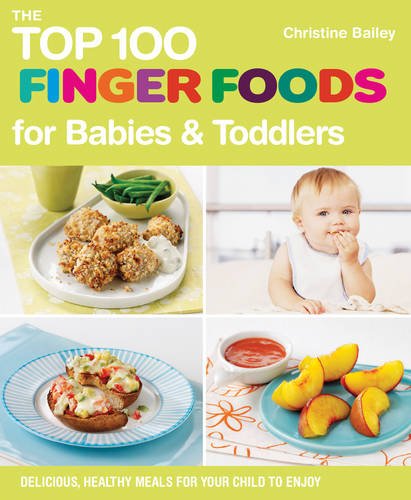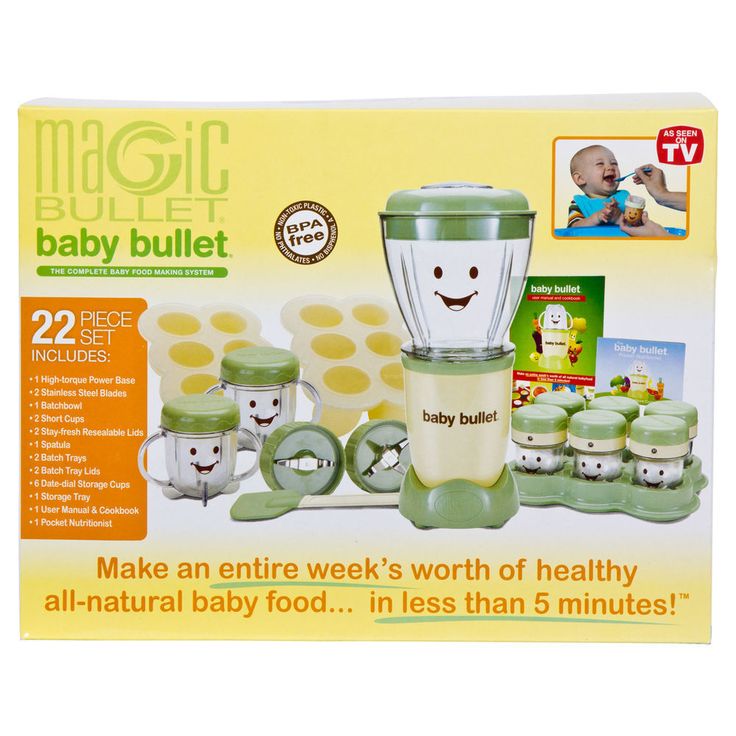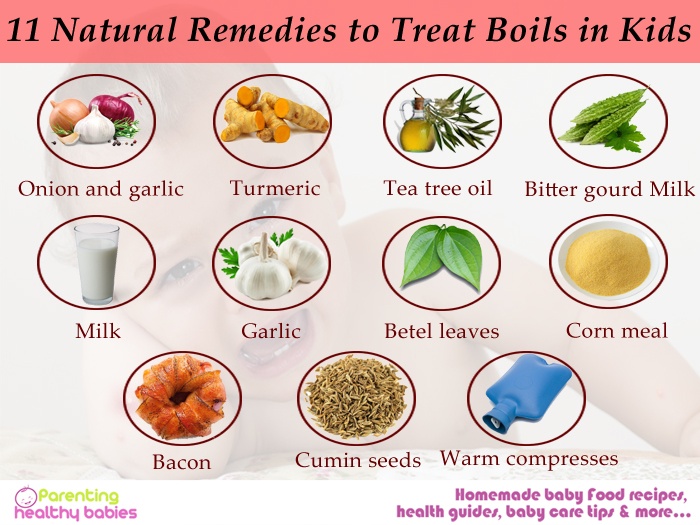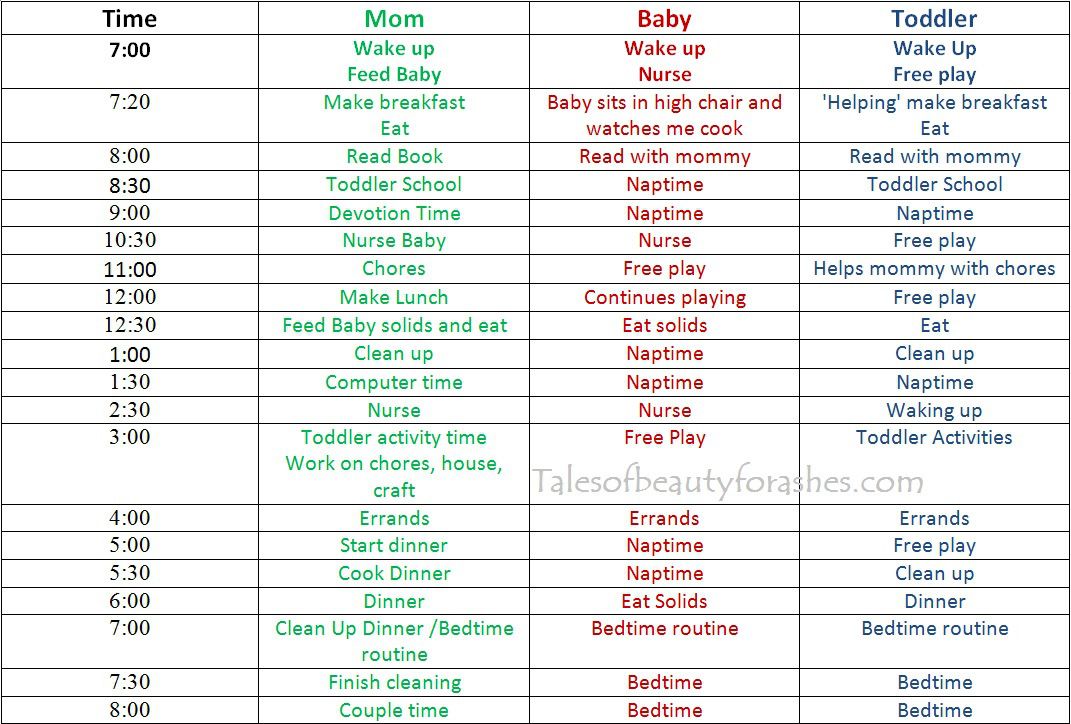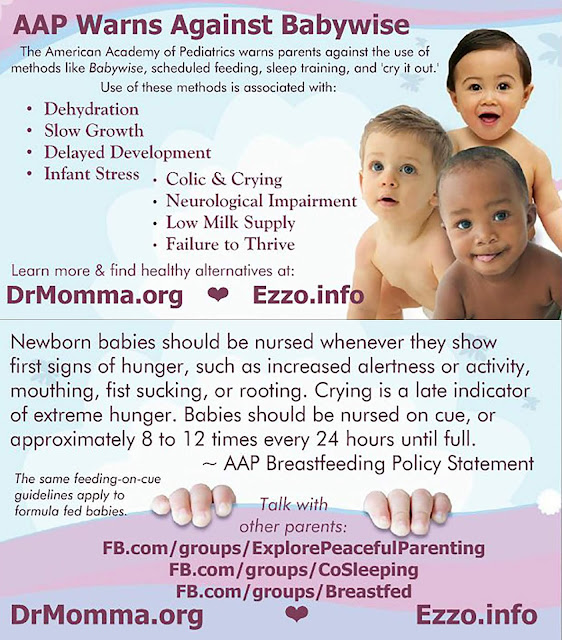Healthy food for babies 6 month
Feeding your baby: 6–12 months
At 6 months of age, breastmilk continues to be a vital source of nutrition; but it’s not enough by itself. You need to now introduce your baby to solid food, in addition to breastmilk, to keep up with her growing needs.
Be sure you give your baby her first foods after she has breastfed, or between nursing sessions, so that your baby continues to breastfeed as much as possible.
When you start to feed your baby solid food, take extra care that she doesn’t become sick. As she crawls about and explores, germs can spread from her hands to her mouth. Protect your baby from getting sick by washing your and her hands with soap before preparing food and before every feeding.
Your baby's first foods
When your baby is 6 months old, she is just learning to chew. Her first foods need to be soft so they’re very easy to swallow, such as porridge or well mashed fruits and vegetables. Did you know that when porridge is too watery, it doesn't have as many nutrients? To make it more nutritious, cook it until it’s thick enough not to run off the spoon.
Feed your baby when you see her give signs that she's hungry – such as putting her hands to her mouth. After washing hands, start by giving your baby just two to three spoonfuls of soft food, twice a day. At this age, her stomach is small so she can only eat small amounts at each meal.
The taste of a new food may surprise your baby. Give her time to get used to these new foods and flavours. Be patient and don’t force your baby to eat. Watch for signs that she is full and stop feeding her then.
As your baby grows, her stomach also grows and she can eat more food with each meal.
Feeding your baby: 6–8 months old
From 6–8 months old, feed your baby half a cup of soft food two to three times a day. Your baby can eat anything except honey, which she shouldn't eat until she is a year old. You can start to add a healthy snack, like mashed fruit, between meals. As your baby gets increasing amounts of solid foods, she should continue to get the same amount of breastmilk.
Feeding your baby: 9–11 months old
From 9–11 months old, your baby can take half a cup of food three to four times a day, plus a healthy snack. Now you can start to chop up soft food into small pieces instead of mashing it. Your baby may even start to eat food herself with her fingers. Continue to breastfeed whenever your baby is hungry.
Each meal needs to be both easy for your baby to eat and packed with nutrition. Make every bite count.
Foods need to be rich in energy and nutrients. In addition to grains and potatoes, be sure your baby has vegetables and fruits, legumes and seeds, a little energy-rich oil or fat, and – especially – animal foods (dairy, eggs, meat, fish and poultry) every day. Eating a variety of foods every day gives your baby the best chance of getting all the nutrients he needs.
If your baby refuses a new food or spits it out, don’t force it. Try again a few days later. You can also try mixing it with another food that your baby likes or squeezing a little breastmilk on top.
Feeding non-breastfed babies
If you're not breastfeeding your baby, she’ll need to eat more often. She'll also need to rely on other foods, including milk products, to get all the nutrition her body needs.
- Start to give your baby solid foods at 6 months of age, just as a breastfed baby would need. Begin with two to three spoonfuls of soft and mashed food four times a day, which will give her the nutrients she needs without breastmilk.
- From 6–8 months old, she’ll need half a cup of soft food four times a day, plus a healthy snack.
- From 9–11 months old, she’ll need half a cup of food four to five times a day, plus two healthy snacks.
Baby's first foods: The 10 best foods for babies
These 10 first foods are ideal for your baby because they're full of essential nutrients, reasonably priced, easy to prepare, and delicious. Avocados contain healthy fats, while bananas are loaded with potassium. Blueberries are bursting with antioxidants, whereas broccoli offers fiber and folate. Both lentils and meat are packed with protein. Prunes can help with constipation, and yogurt helps form healthy bones and teeth. Sweet potatoes and winter squash are great sources of beta-carotene and vitamin C.
Both lentils and meat are packed with protein. Prunes can help with constipation, and yogurt helps form healthy bones and teeth. Sweet potatoes and winter squash are great sources of beta-carotene and vitamin C.
According to the American Academy of Pediatrics, it's important to offer your baby a variety of healthy foods. There are lots of healthy, baby-friendly foods out there, but these 10 recommended by doctors and dietitians alike stand out from the pack. From vitamin-rich fruits and veggies to meats and beans loaded with protein, these superfoods are full of essential nutrients, reasonably priced, easy to prepare, and delicious.
Many are also favorite first foods. Before introducing solids, talk to the doctor about your baby's readiness for solids, and which foods to introduce and when. Then introduce foods one at a time, waiting at least three days after each new food to watch for any allergic reaction.
Avocados
BabyCenter parents are all about avocado as a first food.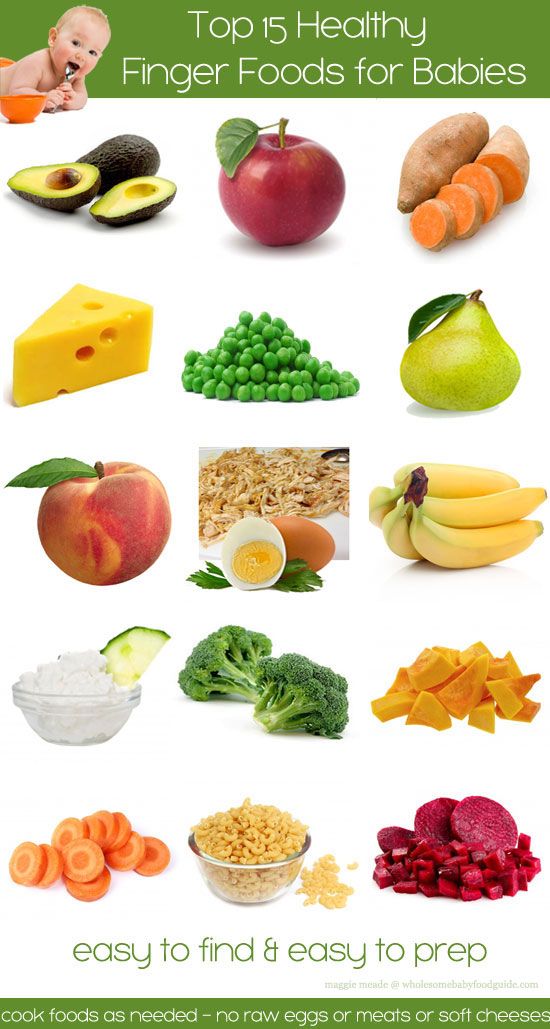 This buttery fruit-vegetable is rich in healthy unsaturated fats that help boost brain development. In fact, the fat composition of avocados is somewhat similar to that of breast milk.
This buttery fruit-vegetable is rich in healthy unsaturated fats that help boost brain development. In fact, the fat composition of avocados is somewhat similar to that of breast milk.
Serving ideas: Mash avocado with a fork, or make baby guacamole.
Bananas
Known as a good source of potassium, this grab-and-go fruit also contains vitamins B6 and C, fiber, and magnesium.
Serving ideas: Make banana and mango puree. Or, for your little one's first smoothie, puree banana and peach chunks with whole-milk yogurt.
Blueberries
Blueberries are bursting with antioxidants. The deep, brilliant blue of these berries comes from flavonoids that benefit your baby's eyes, brain, and even urinary tract.
Serving ideas: Blend or mash blueberries well and swirl a spoonful of the juicy purple puree into yogurt, or top silky coconut milk rice pudding with blueberry compote.
Broccoli
This cruciferous vegetable is a rich source of essential nutrients, including fiber, folate, and calcium.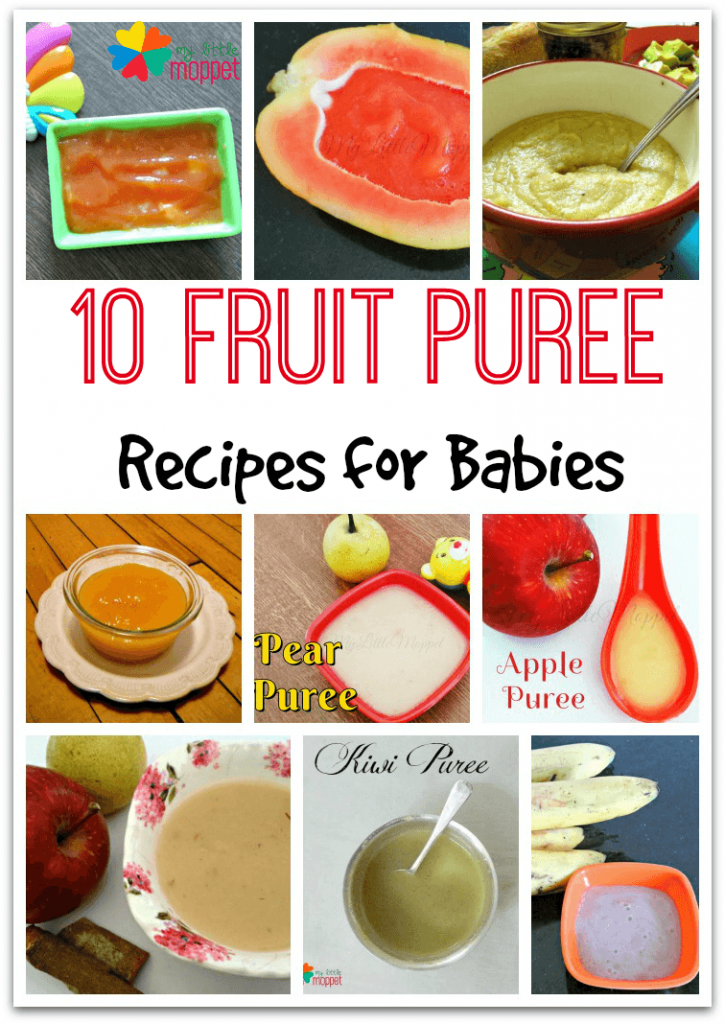 Introduce your baby to broccoli's bold flavor early, and you'll be expanding their tastes and encouraging a lifelong love of green vegetables.
Introduce your baby to broccoli's bold flavor early, and you'll be expanding their tastes and encouraging a lifelong love of green vegetables.
Advertisement | page continues below
Serving idea: Steam until soft, cut into pieces small enough for your child to eat safely, and then chill. Steaming takes the bite out of broccoli, and some babies prefer the texture and taste when it's cold.
Lentils
Beans and other legumes pack lots of lean protein and fiber. But unlike larger beans, little lentils simmer into a pleasing mush just right for baby bites. They're also one of the cheapest healthy foods you can buy.
Serving ideas: Cook finely diced carrots along with the lentils. As your baby gets older, double up on nutrient-rich foods by making lentil and spinach stew.
Meat
Lack of iron can cause anemia. The American Academy of Pediatrics recommends meat as a first food because it's such a great source of protein, zinc, and iron, especially red meat and dark poultry meat.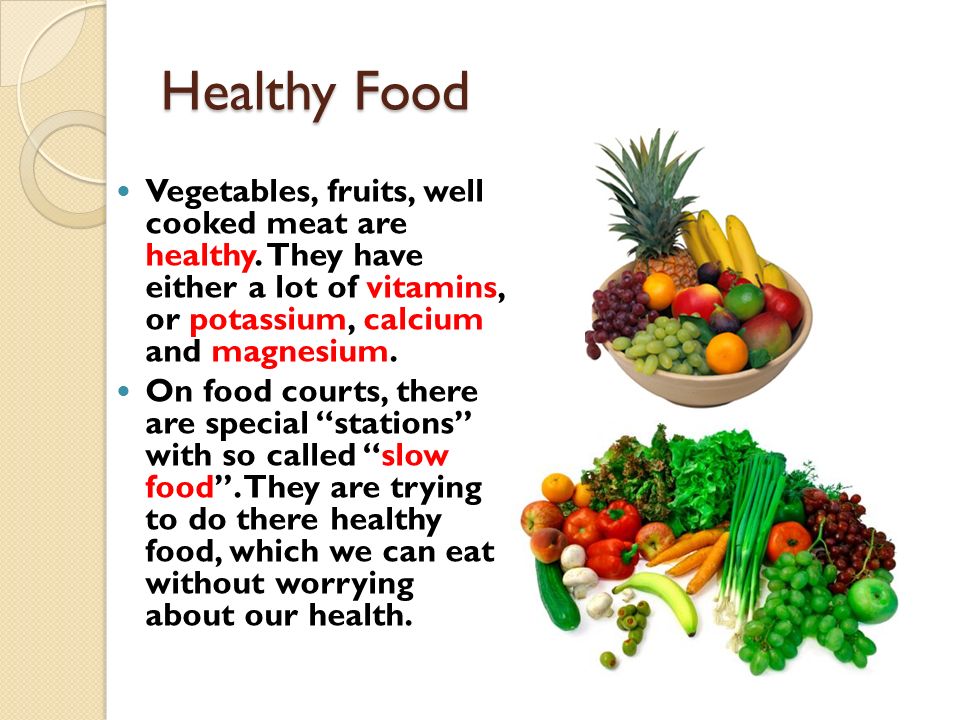 Plus, babies absorb iron more easily from meat than from iron-fortified cereals, another common first food.
Plus, babies absorb iron more easily from meat than from iron-fortified cereals, another common first food.
Serving ideas: If your baby is new to solids, try our easy turkey or chicken puree recipe. As they get older, introduce new flavors with chicken curry with green beans and zucchini or shepherd's pie.
Prunes
Whether you call them "prunes" or "dried plums," these humble fruits don't sound glamorous – but they're soft, sweet, and full of fiber. Your baby may suffer from constipation when switching to solids, as it's a big change for their system. Add pureed prunes to your baby's diet to aid digestion and keep things moving.
Serving ideas: Serve pureed prunes alone or mixed with other foods, such as oatmeal, cereal, or applesauce, for a naturally sweet treat.
Sweet potatoes
Sweet potatoes are one of the more popular first foods for babies, who tend to like both their sweetness and texture. These colorful root vegetables are packed with beta-carotene, vitamin C, and minerals, including iron and copper.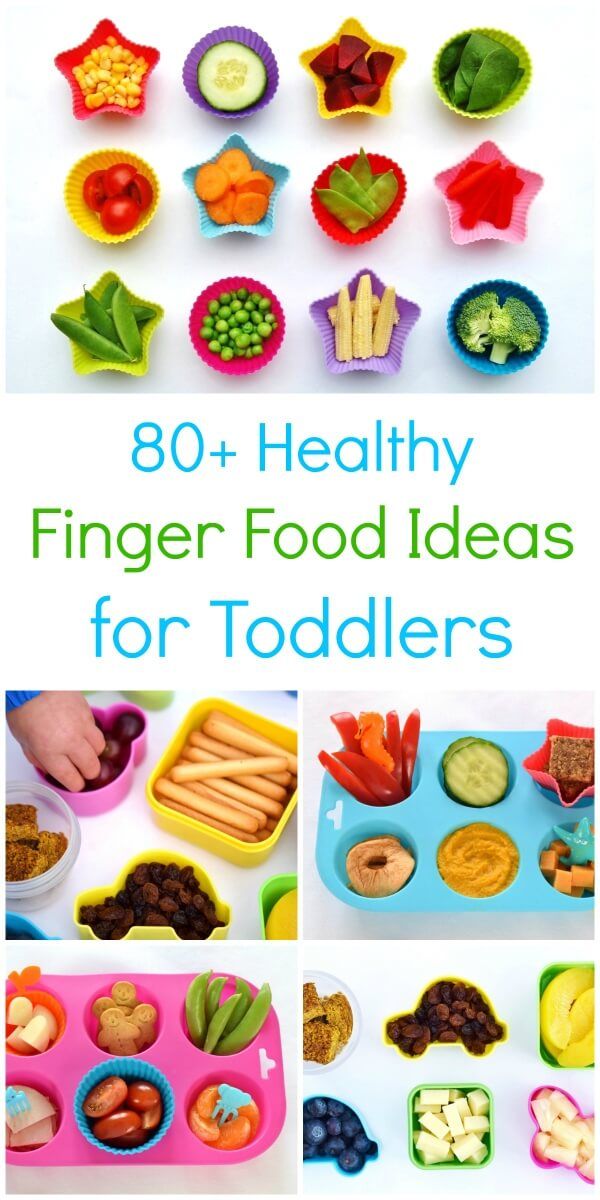
Serving ideas: Serve sweet potato puree alone or swirled into pureed chicken or turkey.
Winter squash
Orange- or yellow-fleshed hard winter squashes such as butternut, acorn, and pumpkin boast many benefits, one of which is they're exceptionally rich in beta-carotene, recognized for being great for eyes. Squash is also an excellent source of vitamin C. Natural sweetness and a creamy texture add to the appeal of winter varieties.
Serving ideas: Roast a winter squash like butternut, scoop out the flesh, and puree it for an easy first food. As your baby gets older, introduce new flavors and textures with dishes like smashed chickpea and butternut chili.
Yogurt
Creamy yogurt is rich in calcium and vitamin D, necessary for healthy bones and teeth. Your baby can have it at 4 to 6 months, long before they'll be ready for cow's milk.
Opt for plain yogurt with no added sugar. Also look for a brand with the most live cultures, which help regulate the good bacteria in your baby's digestive tract.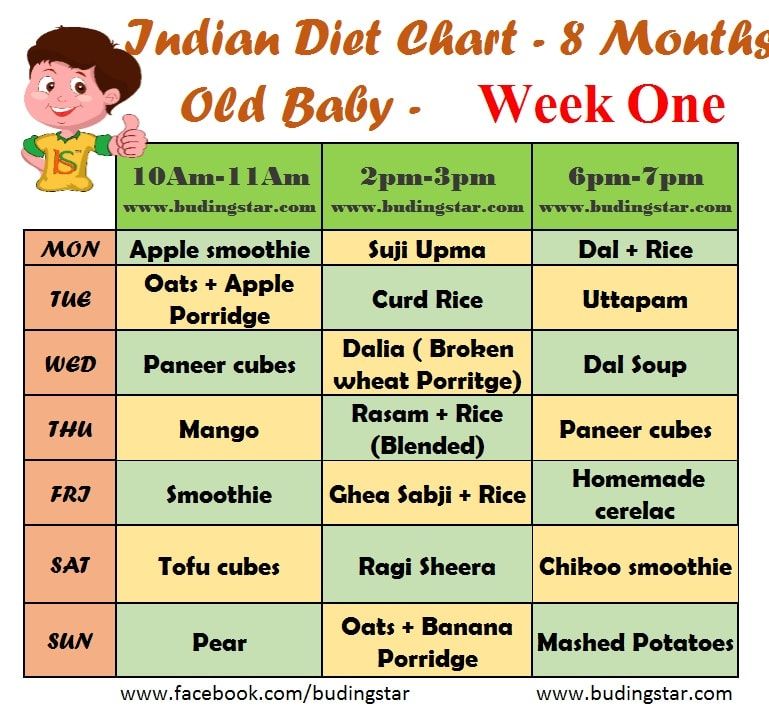 Make sure you pick up whole-milk yogurt – babies need the calories from fat.
Make sure you pick up whole-milk yogurt – babies need the calories from fat.
Serving ideas: Yogurt is fine on its own, or swirl in pureed berries or other fresh fruit, applesauce, or mashed avocado.
Was this article helpful?
Yes
No
Union of Pediatricians of Russia
Nutrition for children from 1 to 3 years of age
The period from 1 to 3 years of life is a crucial stage in the transition to an adult type of nutrition, which has certain features. In order to ensure that all the necessary nutrients enter the child's body and at the same time prevent an excess of individual nutrients, nutrition should be balanced and varied.
The daily amount of food for children aged 1 to 1.5 years should be 1000-1200 g, from 1.5 to 3 years - 1200-1500 g, the amount of food in one feeding should not exceed 300-350 ml. The diet consists of three main meals per day and two snacks. It is considered optimal when breakfast is 25% of the total energy density of the diet, lunch is 30–35%, dinner is 20%, and additional meals are about 10%. In general, the child can eat the same food as the rest of the family.
In general, the child can eat the same food as the rest of the family.
In the diet of a child of 1–3 years of age , must be present daily: meat of animals or poultry, dairy and sour-milk products, vegetables, fruits, bread, cereals, vegetable and butter; fish and eggs are included in the diet 2-3 times a week.
Cereal products: bread - 2-3 servings per day, cereals and side dishes - 1 time per day
Fruit and/or vegetables: at least 5 times a day
Dairy products: at least 3 servings per day (including those used to make cereals, yoghurts, fermented milk drinks, cottage cheese, infant formula or breast milk).
Domestic pediatricians recommend, when compiling a diet for children aged 1–3 years, preference should be given to specialized children's dairy products of industrial production that meet high quality requirements and safety indicators for this age. Most children's dairy products are additionally enriched with vitamins and/or minerals and other biologically active components, taking into account the physiological needs of children of this age. At the same time, in foreign recommendations, children over 1 year old are offered the gradual introduction of whole cow's milk, which is rich in fats necessary for proper growth and development, the absorption of vitamins A and D, the development of the brain and nervous system of the child.
At the same time, in foreign recommendations, children over 1 year old are offered the gradual introduction of whole cow's milk, which is rich in fats necessary for proper growth and development, the absorption of vitamins A and D, the development of the brain and nervous system of the child.
Meat dishes: 2-3 times a day
Fish dishes: 2-3 servings per week
Eggs: 2-3 per week
Dietary fats: 3-4 teaspoons of butter and/or vegetable oils per day
When cooking, use the minimum amount of salt and sugar, and do not add them to industrial products.
Offer your child a variety of foods and let them choose for themselves. Children love to eat on their own, so if possible, offer food that the child can eat with their hands.
It is important to remember that a baby can choke on pieces of food, so whatever you give your baby should be crushed or cut into small pieces that can be easily chewed.
Do not give to a small child: nuts, whole grapes, cherry tomatoes (unless quartered), whole carrots, seeds (such as pumpkin or sunflower seeds), round candies, legumes, raisins, because a child can eat them choke.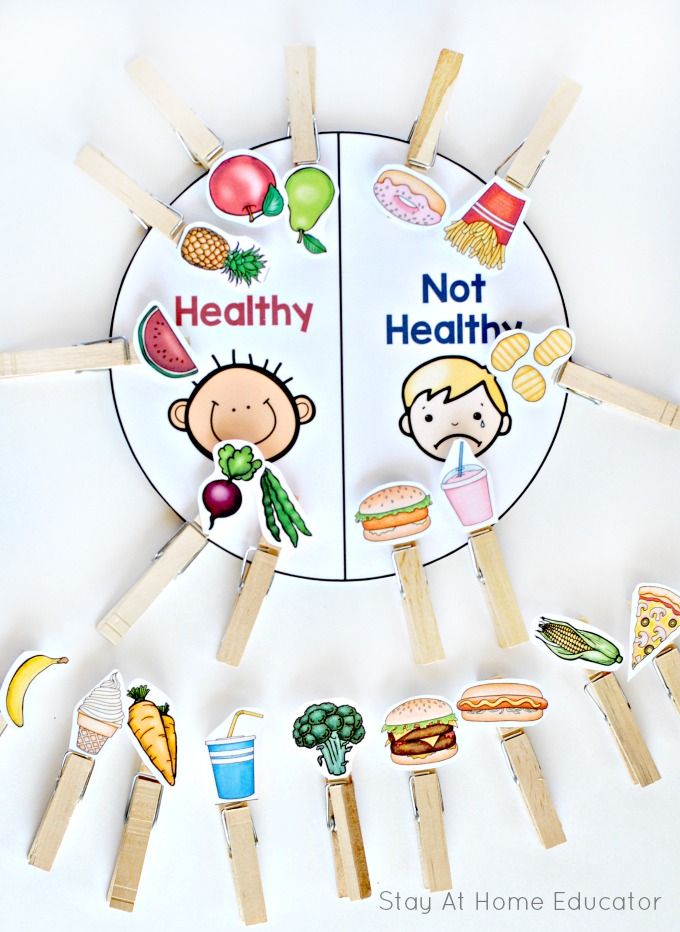
Also in the diet of children of the first 3 years of life should not be present:
Mushrooms; canned snacks, pickled vegetables and fruits
Home canned food
Dry concentrates for side dishes
Hot sauces, mustard, horseradish, pepper, vinegar, mayonnaise
Natural coffee
Juices and drinks in the form of dry concentrates; sweet carbonated drinks
Products containing food additives (flavorings, dyes of artificial origin, including chewing gum), popcorn
Combined fats; cakes and pastries
It is important to remember that children of this age should not be given too spicy and spicy foods.
Proper nutrition for children - the basics of a healthy diet for every day
Many parents are much more responsible for organizing the nutrition of their children than they are for their own diet. And it’s completely in vain, because the formation of a culture of healthy nutrition for children is formed not only by compiling an ideal menu for a child. The eating behavior of the whole family is extremely important, which the baby pays attention to and which in the future forms his own eating habits and preferences.
The eating behavior of the whole family is extremely important, which the baby pays attention to and which in the future forms his own eating habits and preferences.
The importance of proper nutrition for children
The development of the child's body is influenced by a combination of factors, but the most important role belongs to food. The development of the child, the formation of basic skills, not only in childhood, but also in adulthood, depends on a diet that is correctly compiled in early childhood.
Proper nutrition improves mental acuity, memory, mood, promotes proper growth and development of the body, helps maintain weight and metabolism. With a balanced healthy diet, you can prevent the development of chronic diseases such as obesity, diabetes, arterial hypertension and a number of others.
Proper nutrition is one of the main ways to maintain health and a high quality of life for a long time. Most human eating habits are formed in childhood and remain with him for life. Therefore, it is very important that the baby eats properly from the first days of life.
Therefore, it is very important that the baby eats properly from the first days of life.
What is the right diet for a child
A healthy diet for a child every day is food that contains all the necessary nutrients. Unfortunately, today many children make their choice in favor of fast food, and parents do not limit them in any way. Yes, it is quite tasty and such dishes are prepared quickly, which means that you can quickly feed the child without wasting your time preparing food.
But the fact is that fast food is extremely unhealthy, not only for children, but also for adults. It leads to the development of obesity, disrupts metabolic processes, affects the digestive organs, which does not fit into the idea of healthy nutrition at all.
Here are the basic principles of proper nutrition:
- every day on the table there should be products that completely cover the body's need for nutrients;
- nutrition should be balanced;
- food is recommended to be boiled, baked in the oven, steamed, but it is better to refuse fried, smoked, pickled, canned food, as well as fast food;
- if the child has intolerance to certain products, then the menu should be adjusted accordingly.

When to teach a child to eat healthy
It is important to teach your child to eat healthy from an early age. This will help shape your eating habits. A study was conducted in which nutritionists observed the eating behavior of one and a half thousand children from birth to the age of six. It turned out that children who were given little fruits and vegetables in the first year of life refused to eat them at 6 years old. The best age for teaching a child to proper nutrition is from 6 months.
By the way, the baby gets acquainted with many tastes even before his birth. While in the mother's abdomen, he swallows amniotic fluid. The taste of this liquid depends on what a woman eats during pregnancy.
After birth, the baby is breastfed and the taste of milk also depends on the mother's diet. This may be why breastfed babies transition to complementary foods much more easily than formula-fed babies.
It has been proven that the child's perception of new foods is highly dependent on whether they were present in the mother's diet during pregnancy and lactation. Therefore, a woman needs to be extremely careful about her diet at this time. It should be hypoallergenic, balanced and rational.
Therefore, a woman needs to be extremely careful about her diet at this time. It should be hypoallergenic, balanced and rational.
Some food preferences are noticeable in a child in the first months of his life. For example, he may enjoy eating salty and sweet foods, while refusing sour or bitter foods. In part, this is a protective function of the body, which, just in case, tries to avoid bitter foods, as they may contain toxic substances. However, not all bitter foods are unhealthy.
Healthy diet for children
The formation of healthy eating habits in children begins with the right diet. Most of all, the body of children and adolescents needs protein. It is a building material for a growing organism, and also compensates for energy losses. The younger the child, the more protein he needs. The most valuable and useful protein product for babies is mother's milk. Also in the children's diet should be vegetable proteins, which are found in legumes and grain products.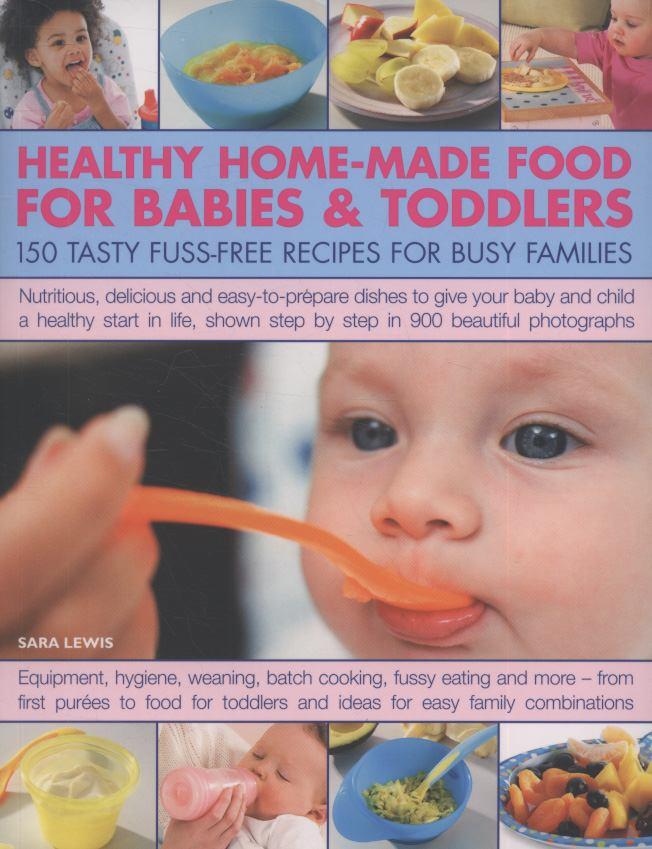 Many legumes in terms of protein content can be compared with products such as meat, eggs, cottage cheese, fish.
Many legumes in terms of protein content can be compared with products such as meat, eggs, cottage cheese, fish.
In addition, the child's body needs essential amino acids that are not produced by the body and must be supplied with food. Amino acids play a huge role in the metabolic processes occurring in the body, and perform many other functions.
The diet must contain fats. These are more concentrated sources of energy than carbohydrates. In addition, the composition of fats includes vitamins A and E, important for the child's body, as well as phospholipids, PUFAs. For children, the best sources of fats are milk, butter, eggs. But the abuse of fats is highly discouraged, as this leads to metabolic disorders, digestive disorders, decreased appetite, and the development of obesity. In addition, excess fat leads to a violation of the absorption of proteins.
Young children need less carbohydrates than fats and proteins. An excess of carbohydrates (especially sugar) impairs the development and growth of children, reduces immunity, and increases the likelihood of developing caries. Useful sources of carbohydrates are fruits, vegetables, fresh juices, berries.
Useful sources of carbohydrates are fruits, vegetables, fresh juices, berries.
The children's body is also in dire need of vitamins (especially A and D). With a lack of vitamin D, rickets develops, hypovitaminosis A leads to disruption of the endocrine system. The most important minerals are calcium, iron and iodine.
The key to health for children is to limit the consumption of sweets. Cookies, jam, marshmallows, sweets can be given, but in small quantities and not every day.
Basic Rules
Here is a brief guide for parents on the rules of healthy eating for children:
1. The best example for children is their parents. Therefore, deciding to instill in your child the habits of proper nutrition, start with yourself.
2. Don't let your child snack on the go. The process of eating should take place at the kitchen table, without a phone, TV or tablet. It is necessary that the child was completely focused on eating, the only way to ensure the normal absorption of food.
3. When compiling a menu for every day, consider not only the benefits of the products, but also the tastes of the child, as well as the individual characteristics of his body (allergies, the presence of chronic diseases, and so on).
4. Set a clear diet. The baby should eat at certain hours. There should be at least four meals a day.
5. Buy only fresh and high-quality products in stores. Pay attention to the expiration date and composition.
Remember that by teaching your baby to eat right, you are laying the foundation for his future health.
Possible problems
If a child constantly eats improperly, abuses fast food and other junk food, then the following health problems may develop over time:
- lagging behind peers in development and growth;
- obesity;
- lack of iodine, iron, vitamins and other nutrients in the body;
- gastritis;
- deterioration in general well-being, lethargy, weakness, lethargy.
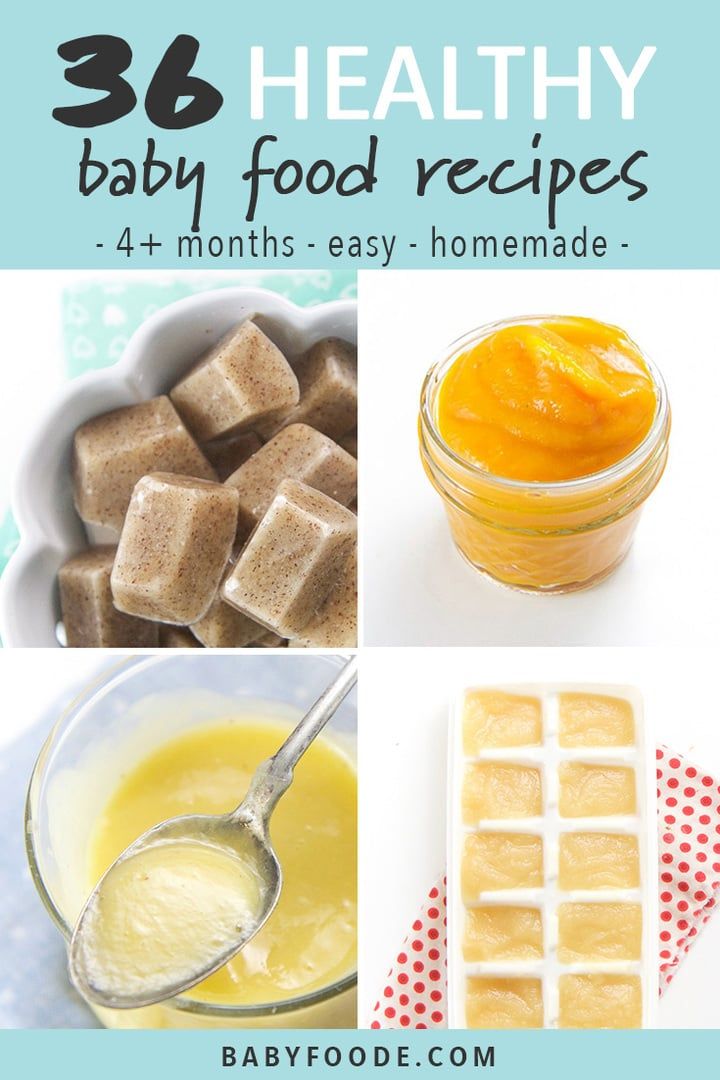
Some teenage girls start to go on a strict diet to fit the ideals imposed by the fashion world. This negatively affects their health, leads to disruption of the cycle, which in the future may cause the development of infertility.
Boys have other problems. Some of them, in an effort to find a beautiful muscular body, begin to get involved in hormonal drugs, and also eat improperly, which can also lead to health problems over time.
Thus, proper nutrition is of decisive importance for children, starting from birth. And the task of parents is to provide them with fresh, high-quality products and make the right diet. This will help you avoid many health problems in the future.
Is it necessary to force children to eat
Quite often, children refuse to eat healthy food, citing the fact that they do not like it. Should they be forced to do it against their will? Of course not. But it is quite possible and even necessary to convince the child to eat calmly and reasonably.
Remember how our mothers and grandmothers told many of us in an ultimatum form that until we had eaten all the food on the plate, they would not let us out from the table? And how did you feel about it? Surely, such a statement did not add motivation.
Many mothers take the fact that the child does not eat the food prepared by them as a personal insult. They believe that the child neglects care and does not appreciate the time spent on him. In fact, this position is selfish. Up takes a sense of resentment for the fact that the children rejected their care and love.
But this is absolutely not true. The child still loves them very much, and the reasons for the lack of appetite usually lie in a completely different plane. You just need to confidentially and calmly discuss the situation and understand what's going on.
Scientists have found that there is a link between forcing a child to eat and eating disorders in adulthood. In Western countries, a child is often forced to eat healthy food, motivated by the fact that it is fashionable, healthy, tasty, expensive. And, for example, in some Third World countries, a mother will be ashamed if her child is thin, since in this case the neighbors will consider that the family is poor.
And, for example, in some Third World countries, a mother will be ashamed if her child is thin, since in this case the neighbors will consider that the family is poor.
In general, motivation can be very different. Unfortunately, the total control of parents regarding nutrition often leads to negative consequences in the adult life of the child. The same applies to the ban on fast food, chips and other junk food. The forbidden fruit is always sweet, and the child begins to perceive such food as an inaccessible pleasure, which further increases the desire to eat it.
And vice versa, forcing the baby to eat wholesome food against his will, parents achieve the exact opposite effect. The child simply ceases to perceive this product as food, which will inevitably have a negative impact on his eating habits in the future.
Article sources:
- Nutrition of young children. Netrebenko O.K. Pediatrics. Journal them. G. N. Speransky, 2007.
